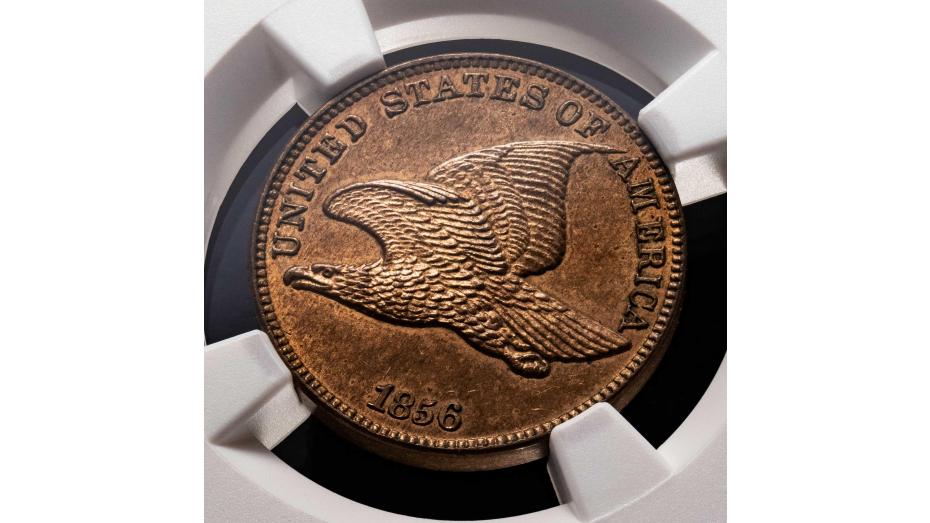From Cent to Gold: The Flying Eagle Design
One of the most monumental changes to American coinage happened with the Act of February 21, 1857, which allowed the striking of Flying Eagle Cent. Back in 1793, circulating American coinage began with cents and half-cents, but it wasn’t until 1857 that the cent as we know it was created.
Starting with the 1793 Flowing Hair Chain Cent, large cents were struck from copper and weighed 13.8 grams. The design was changed several times ending with the 1857 “Young” Matron Head. Mint Director James Ross Snowden included in his report that minting the large cents “barely paid expenses” as the cost of the copper used to strike the large cent was more than the value of the coin. In addition, large cents were barely circulated outside of larger cities. These events, among others, led to the Coinage Act of 1857.
First struck in 1856 as a pattern, the Flying Eagle cent weighed only 4.67 grams, about one third of the Large Cent’s weight. The Flying Eagle Cent was only struck over the course of a couple of years as the design was difficult to produce. The intricate details of the eagle’s feathers were too difficult for the mint to strike, so Longacre then designed the Indian Head Cent which lasted for 50 years.
While the Flying Eagle Cent was just struck until 1858, the design stayed present in the mind of one numismatic luminary: Augustus Saint-Gaudens. The famed sculptor wrote to President Theodore Roosevelt in 1906 about his plans for the reverse of his double eagle design, referencing the short-lived Flying Eagle cent. He planned to use “a flying eagle, a modification of the device which was used on the cent of 1857.” He admitted that upon seeing the coin “[he] was so impressed by it that [he] thought if carried out with some modifications, nothing better could be done.” He even went on to say that the Flying Eagle Cent “is by all odds the best design on any American coin."
Comparing the Flying Eagle Cent to Saint-Gaudens Gold Double Eagle, it’s quite easy to see the influence. The Flying Eagle Cent features our majestic eagle with wings raised in flight, facing to the left of the viewer. The tip of the forward-facing wing is bent and the tip of the back-facing wing is curved, as if mid-flap. The eagle’s head is tilted slightly downward, as an eagle searching for prey would look. When looking at Saint-Gaudens eagle, the bird is still in flight but appears to be taking off towards the sky. Saint-Gaudens embellished the design with sun rays at the bottom, which combined with the upward trajectory of the eagle symbolizes America’s rise to power.
Due to the hardness of copper, striking the Flying Eagle Cent proved difficult for the Mint. Technology at the time was not advanced enough to give the detailed design its proper due. When Saint-Gaudens designed his double eagle, the design was struck in gold, which is a much softer metal than copper. The use of gold in conjunction with the larger surface area of the coin allowed the design to shine like it never had before.
While the Flying Eagle Cent was only struck for 3 years, the influence it had on American coinage is still felt today as the Saint-Gaudens Gold Double Eagle is hailed as one of the most beautiful coin designs struck by the U.S. Mint.






